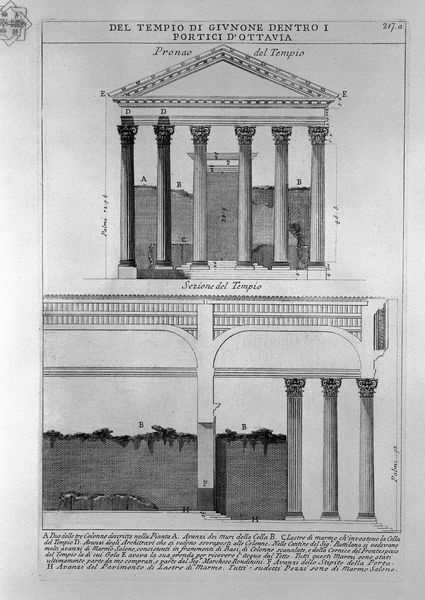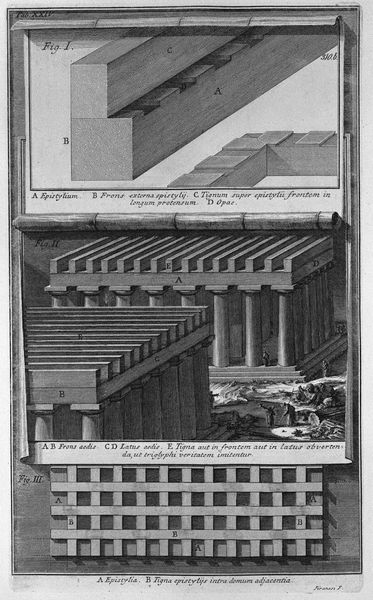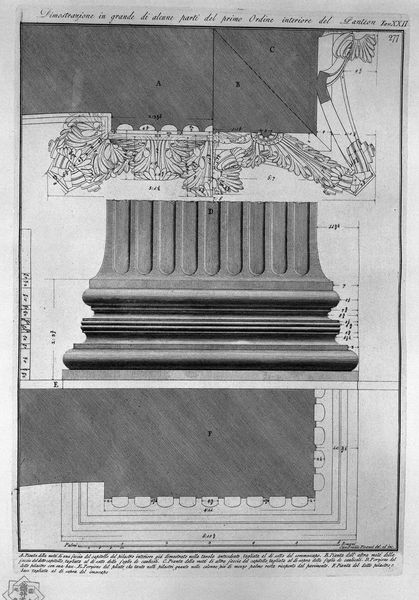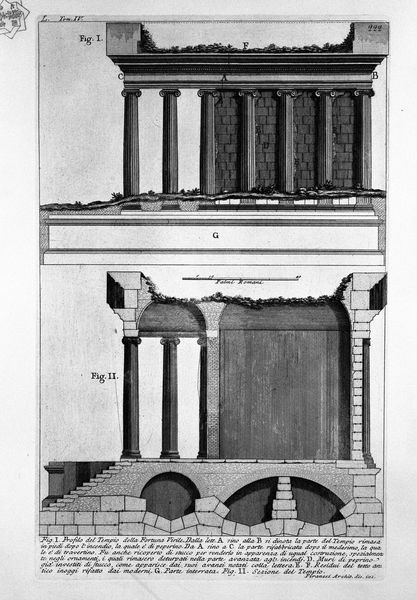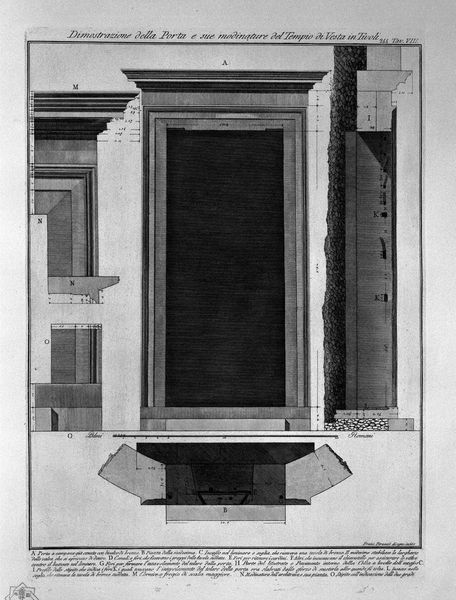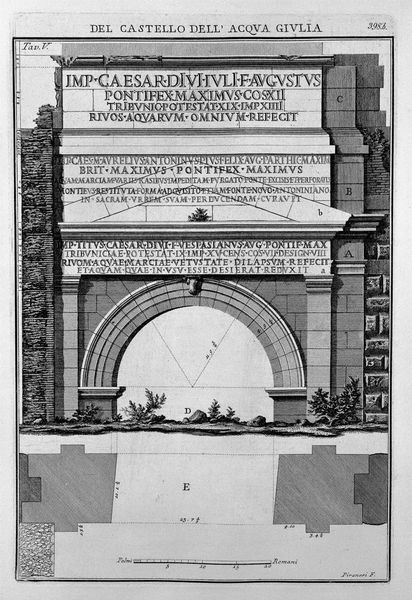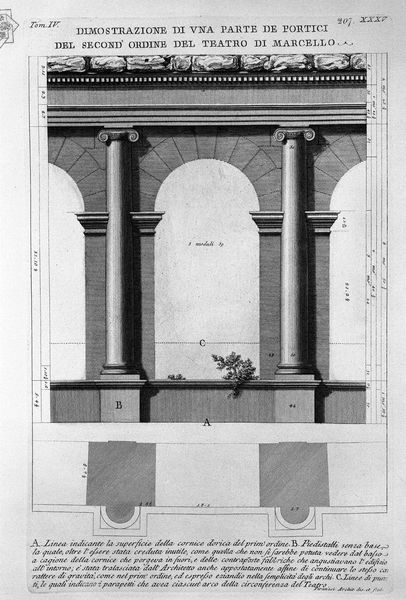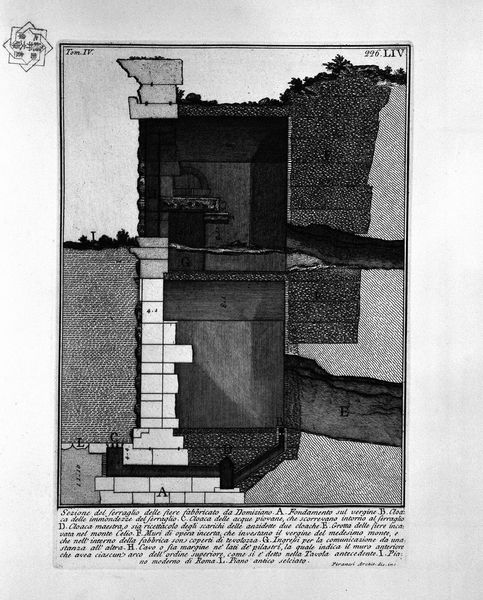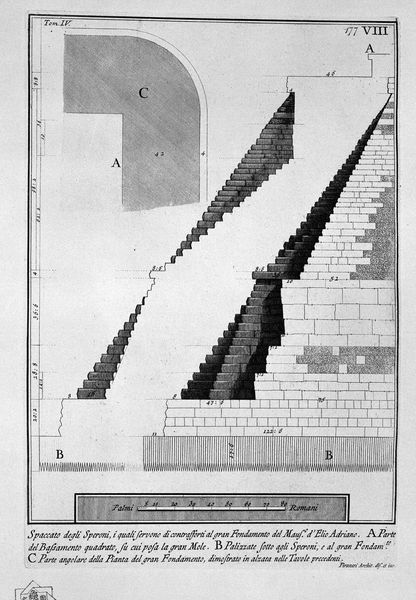
The Roman antiquities, t. 2, Plate IV. Plan and elevation of the `surplus of wall in the tomb of C. Poblicio at the foot of the Capitol in a place called Macel de `Corvi. 1756
0:00
0:00
drawing, print, engraving, architecture
#
drawing
# print
#
sculpture
#
perspective
#
romanesque
#
geometric
#
ancient-mediterranean
#
arch
#
line
#
engraving
#
architecture
Copyright: Public domain
Giovanni Battista Piranesi made this etching, plan and elevation of the Tomb of C. Poblicio, in eighteenth-century Italy. Piranesi was more than just an artist; he was an antiquarian whose prints shaped European ideas about classical Roman architecture. This image is not just a faithful record. Piranesi was interested in the social and political aspects of Roman architecture, and he presents the tomb in a way that reflects its historical significance. The tomb itself was built during the Roman Republic, a period when civic virtue and public service were highly valued. The inscription on the tomb indicates that C. Poblicio was granted this burial place by the senate and the people, a testament to his contributions to society. Piranesi emphasizes this connection by depicting the tomb as a monumental structure, underscoring the power of Roman institutions. To fully understand Piranesi's work, we can consult archaeological reports, historical documents, and other visual representations of Roman architecture. By doing so, we come to see how art is always made within particular social and institutional contexts.
Comments
No comments
Be the first to comment and join the conversation on the ultimate creative platform.
